The world of avian vocalizations is incredibly diverse, ranging from melodious tunes to bizarre mechanical sounds that hardly seem natural. Birds use their calls for everything from attracting mates to warning of predators, establishing territory, and maintaining social bonds. While many species have pleasant songs that delight human ears, others have evolved truly extraordinary vocal abilities that stand out for their uniqueness, complexity, or sheer strangeness. This article explores twelve birds with some of the most distinctive and remarkable calls in the avian world, examining what makes each vocalization special and the evolutionary purposes behind these sonic masterpieces.
Lyrebird Nature’s Premier Mimic
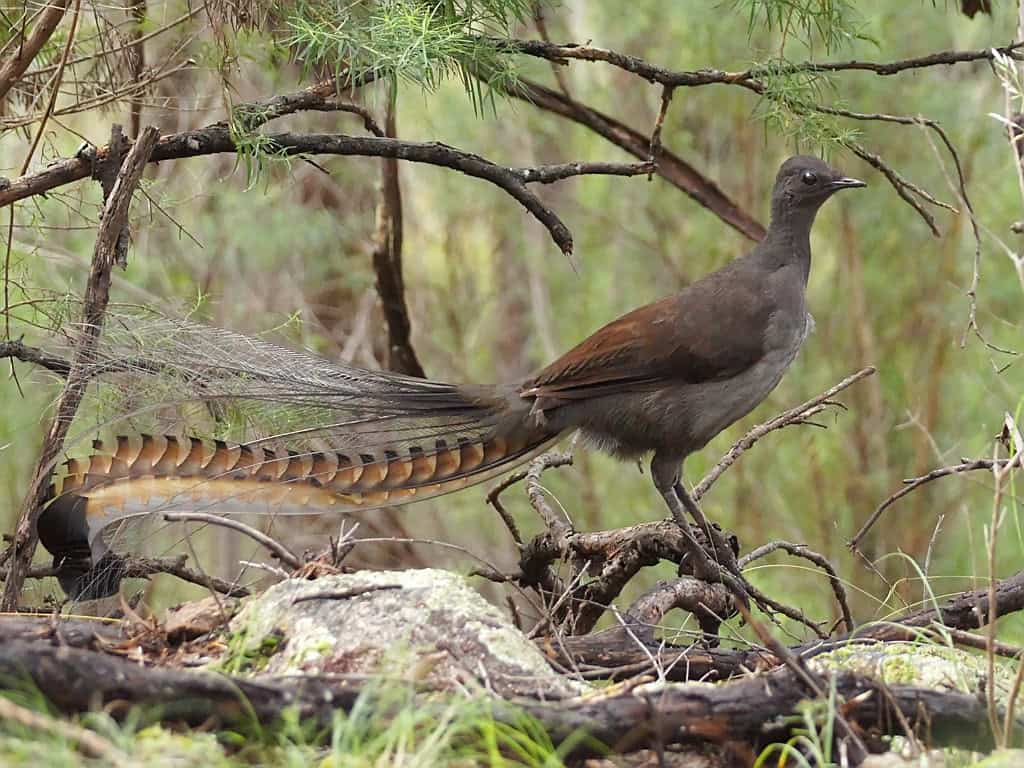
The superb lyrebird (Menura novaehollandiae) of Australia possesses perhaps the most extraordinary vocal abilities in the avian world. These ground-dwelling birds can perfectly mimic virtually any sound they hear in their environment with astonishing accuracy. A single lyrebird can imitate up to 20 different species of birds and their calls, often in rapid succession. What truly sets lyrebirds apart is their ability to replicate non-avian sounds with remarkable precision—including camera shutters, car alarms, chainsaws, and even human speech. Males perform elaborate mimicry displays during courtship, showcasing their vocal prowess while fanning their magnificent lyre-shaped tails. Their brain devotes significant neural resources to this mimicry, with specialized areas devoted to remembering and reproducing sounds. This extraordinary ability evolved as a sexual selection mechanism, as females appear to prefer males with larger repertoires and more accurate mimicry.
Common Loon The Haunting Wail of Northern Lakes

The common loon (Gavia immer) produces one of North America’s most haunting and iconic wilderness sounds. These water birds have a repertoire of four distinct calls, each serving a different communication purpose. The tremolo—a wavering, laughing call—signals alarm or distress. The wail—a long, mournful cry—helps keep track of other loons and announce territory. The yodel—a complex pattern of notes—is used only by males for territorial defense. Most famous is the hoot—a short, soft call used among family members. The loon’s calls can travel for miles across still waters, especially on quiet evenings, creating an eerie soundtrack that has become synonymous with remote northern lakes. Their unique vocalizations result from their specialized syrinx (vocal organ) and are amplified by the loon’s resonant throat chamber. These calls are so culturally significant that the common loon appears on Canadian currency, and its voice has become an emblem of wilderness conservation efforts across North America.
Potoo The Ghost of the Rainforest
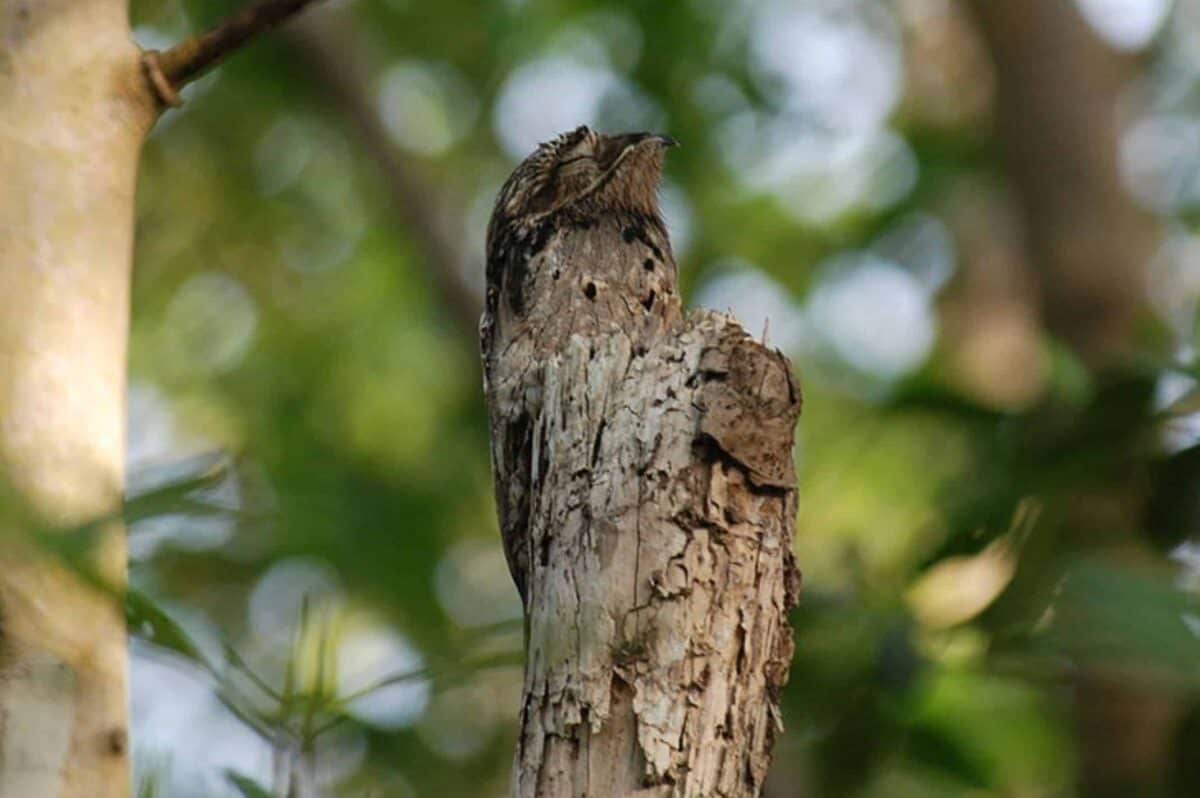
The potoo birds (Nyctibius species) of Central and South America produce what many consider to be among the most haunting and otherworldly bird calls in existence. These nocturnal birds, masters of camouflage who resemble broken branches during daylight hours, emit a descending series of mournful notes that sound remarkably like a ghostly wailing or a human crying out in despair. The common potoo’s call typically consists of a plaintive “poor-me-one” that gradually drops in pitch, creating an eerie effect that carries through the darkness of tropical forests. The great potoo produces an even deeper, more resonant “BOO-booooo” call that can send shivers down the spine of those hearing it for the first time. These unsettling vocalizations serve primarily for territory establishment and mate attraction, with different potoo species having evolved distinct call patterns to avoid acoustic competition in shared habitats. Despite their vocal prominence in the night, potoos remain among the least-studied birds due to their excellent camouflage and nocturnal habits.
Kookaburra The Laughing Bird

The laughing kookaburra (Dacelo novaeguineae) of Australia produces one of the most recognizable bird calls in the world—a raucous series of “kook-kook-kook-ka-ka-ka” sounds that crescendo into what strongly resembles human laughter. This distinctive call, which can be heard up to a mile away, serves as both a territorial proclamation and a social bonding mechanism. Kookaburras are highly social birds that live in family groups, and their famous “laughing” occurs most prominently at dawn and dusk when family groups join in coordinated choruses. These communal calling sessions help strengthen family bonds while alerting neighboring groups to territorial boundaries. Interestingly, each family develops slight variations in their laugh pattern, creating a unique acoustic signature. Young kookaburras learn the family’s specific laugh during an “apprenticeship” period, gradually refining their technique through practice with siblings and parents. This iconic call has become so culturally significant that it appears in countless films and television shows, often (inaccurately) used as a soundtrack for jungle scenes worldwide, despite kookaburras being native only to Australia and New Guinea.
Sage Grouse The Bizarre Popping Display

The greater sage-grouse (Centrocercus urophasianus) of North America’s sagebrush country produces one of the most unusual acoustic displays in the bird world. During mating season, males gather in designated areas called leks to perform an elaborate courtship ritual. The most distinctive element is not exactly a call but a unique vocalization produced by inflating and deflating specialized air sacs concealed beneath the white chest feathers. When inflated, these bright yellow-olive air sacs make a startling “swish-swish-coo-oopoink!” sound that includes deep resonant pops and whistling notes. This is accompanied by an extraordinary visual display where the male struts with his spiky tail fanned, wings brushing the ground, and chest puffed to showcase the inflated air sacs. The sound can carry for up to two miles across the open sagebrush landscape, drawing females to the lek. Each male occupies a small territory within the lek, with dominant males securing central positions that attract more females. The sage-grouse’s unique acoustic properties result from the specialized structure of these esophageal air sacs, which function essentially as biological resonance chambers. Unfortunately, this spectacular display is becoming increasingly rare as the sage-grouse faces habitat loss and population decline across its range.
Bell Miner The Living Wind Chime

The bell miner (Manorina melanophrys), also known as the bellbird, is an Australian honeyeater that produces one of the purest, most bell-like tones in the avian world. Their call consists of a single, crisp “ping” note that sounds remarkably similar to a tiny silver bell being struck. These small olive-green birds live in highly organized colonies, and when dozens or hundreds call together, they create an ethereal soundscape that has been described as “a fairy-tale forest of tinkling bells.” Each bell miner maintains a small territory within the colony and produces its distinctive ping at regular intervals of 2-3 seconds. Research has revealed that individual birds can be identified by subtle variations in their ping’s acoustic properties, allowing colony members to recognize specific individuals. Interestingly, the bell miner has evolved an unusual ecological relationship with psyllid insects that infest eucalyptus trees. The birds feed on the sugary secretions (lerp) produced by these insects, but intentionally avoid eating too many of the insects themselves, essentially “farming” them for their sweet secretions. Their constant pinging helps the colony coordinate this farming activity while keeping other nectar-feeding birds away from their managed resources.
Common Nighthawk The Booming Diver
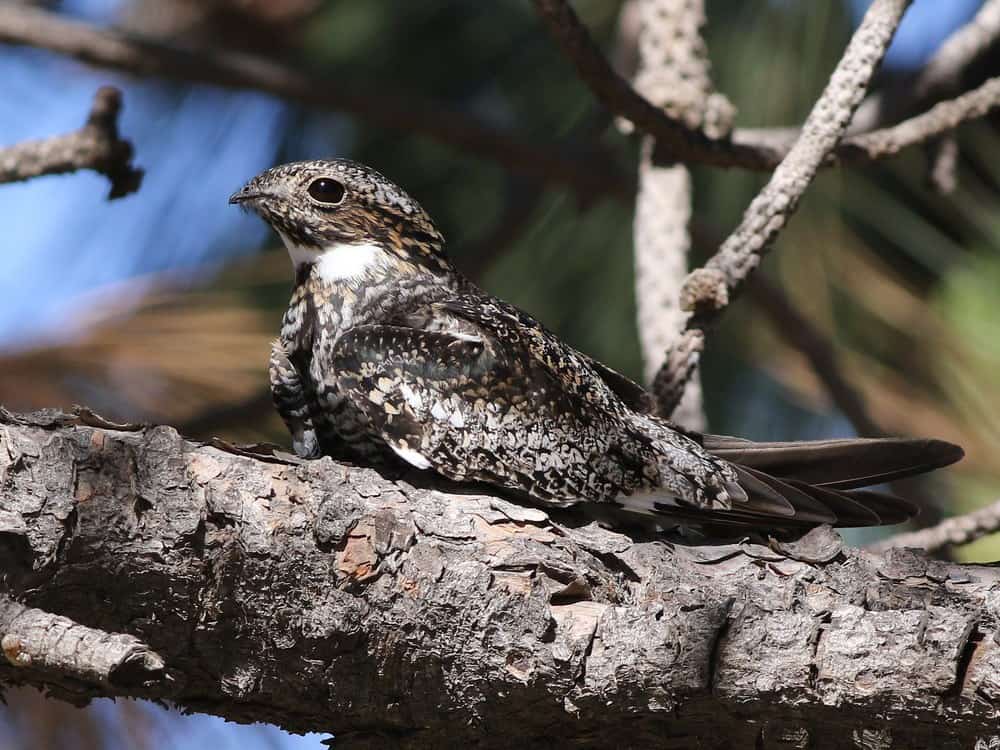
The common nighthawk (Chordeiles minor) produces one of the most unusual non-vocal sounds in the bird world. While they do have a distinctive nasal “peent” call, their most remarkable sound is mechanical rather than vocal. During courtship displays, male nighthawks dive steeply toward the ground before pulling up sharply. As air rushes through their wing feathers during this power dive, it creates a loud, distinctive “boom” or “whoosh” sound often compared to a race car roaring past. This non-vocal acoustic display, known as “booming,” results from air vibrating specialized primary feathers that have evolved specifically for sound production. The booming can be heard from considerable distances and serves both to attract females and warn other males of territorial boundaries. These aerial displays typically occur at dusk and dawn, when nighthawks are most active feeding on flying insects. The common nighthawk is a member of the nightjar family, which includes several species that produce unique mechanical sounds. Unfortunately, nighthawk populations have declined significantly in recent decades due to habitat loss and reduced insect populations, making their distinctive booming increasingly rare in many parts of North America.
Three-Wattled Bellbird The Metallic Clang
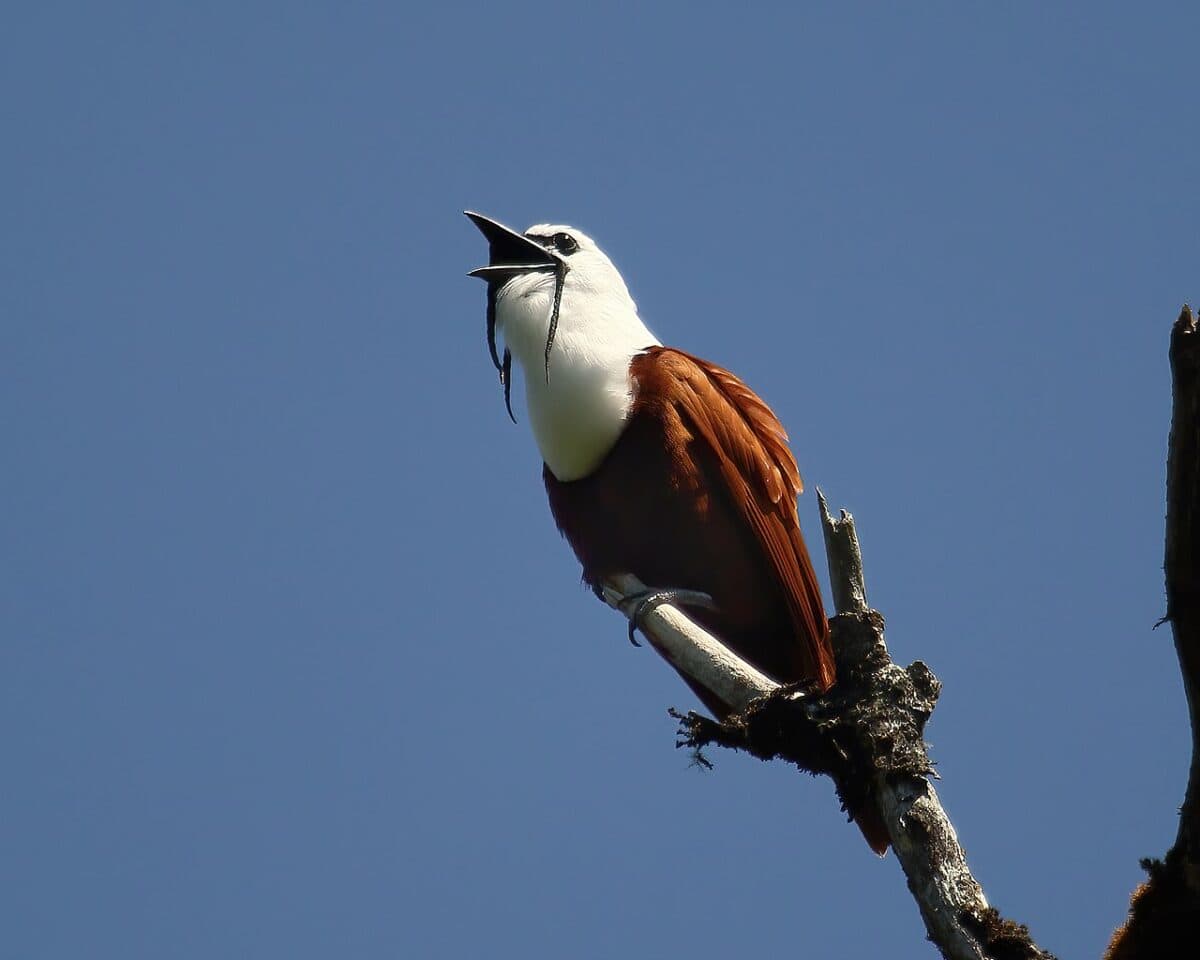
The three-wattled bellbird (Procnias tricarunculatus) of Central America produces what many consider the loudest bird call in the world relative to its body size. The male’s extraordinary vocalization is a powerful, metallic “BONK!” that can be heard from over a kilometer away despite the bird being roughly the size of a robin. This incredible call sounds so mechanical that early naturalists initially mistook it for the sound of distant metal workers or bell ringers. The male bellbird possesses three worm-like wattles (fleshy appendages) that dangle from the base of his bill, which he swings dramatically while calling from exposed perches high in the forest canopy. The call’s exceptional volume and unusual timbre come from the bird’s specialized syrinx and resonating chambers. Interestingly, young males must learn their species’ distinctive call through a lengthy apprenticeship period, gradually refining their technique over several years. They begin with softer, more complex songs before mastering the characteristic metallic bonk. The three-wattled bellbird is considered an umbrella species for conservation, as protecting its habitat benefits many other species that share its range across the cloud forests of Central America, where it makes seasonal altitudinal migrations following fruiting trees.
Kakapo The Booming Ground Parrot
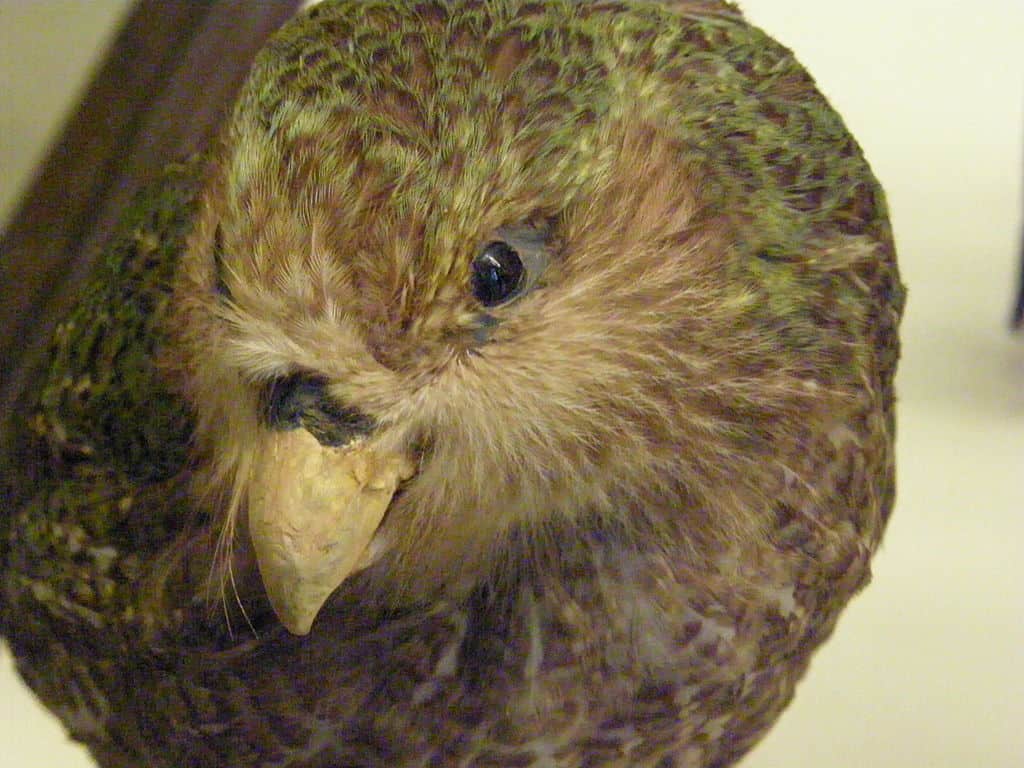
The kakapo (Strigops habroptilus), a critically endangered flightless parrot endemic to New Zealand, produces one of the most unusual courtship calls in the bird world. During breeding season, male kakapos create shallow depressions in the ground called “bowls” that act as acoustic amplifiers for their remarkable “booming” display. Each night during the breeding season, which can last up to four months, males inflate a specialized thoracic air sac and produce a sequence of deep, resonant “booms” that can carry for kilometers through the forest. After a series of about 20 booms, the bird takes a brief pause before beginning again, sometimes continuing this display for up to eight hours per night. This low-frequency sound travels exceptionally well through dense vegetation, allowing females to locate potential mates across considerable distances. What makes this call particularly special is its resemblance to deep bass notes, almost like a distant foghorn or the lowest notes on a pipe organ. The kakapo is the world’s only nocturnal, flightless parrot, and its unusual breeding system—where males gather in loose leks and females choose mates based partly on their booming quality—has evolved in the absence of mammalian predators. With fewer than 250 individuals remaining, conservation efforts to save this unique species include intensive management of breeding opportunities, making the kakapo’s distinctive boom an increasingly precious sound.
Club-winged Manakin The Violin Bird
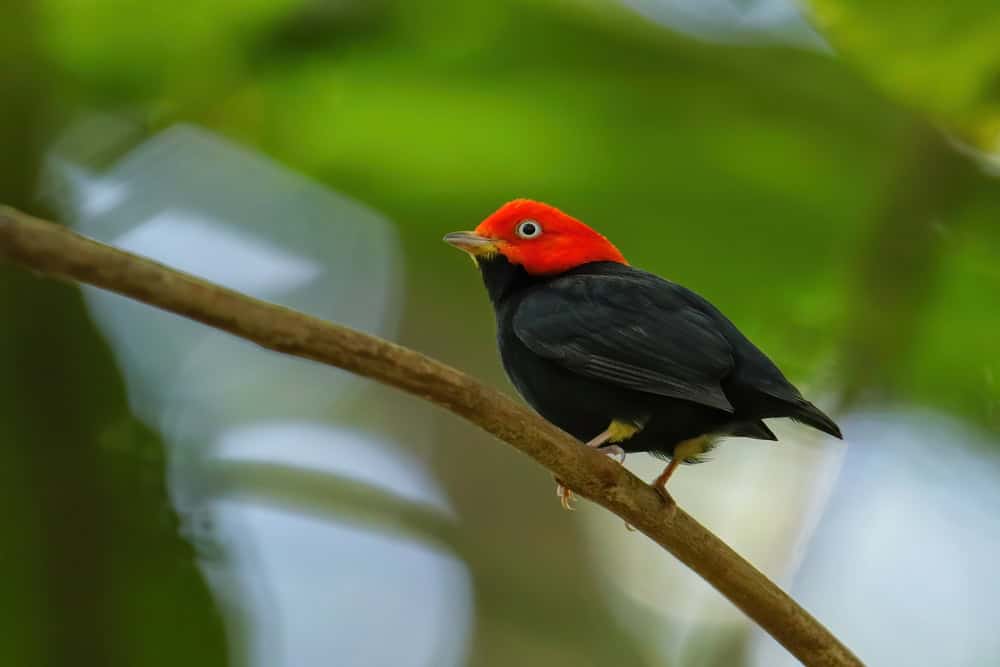
The club-winged manakin (Machaeropterus deliciosus) of South American cloud forests produces sound through one of the most extraordinary mechanisms in the animal kingdom. Unlike most birds that vocalize through their syrinx, male club-winged manakins generate their signature sound mechanically through modified wing feathers. These specialized feathers include club-shaped structures and ridged stems that function similar to violin strings. When the male rapidly vibrates his wings—more than 100 times per second, faster than hummingbird wings—one ridged feather scrapes against another club-shaped feather, creating a peculiar electronic “ting-ting” sound. This sound, reminiscent of a computer-generated tone, is produced at approximately 1,500 Hz and can be clearly heard from over 50 meters away. The evolution of this unique sound-producing mechanism represents an extraordinary example of sexual selection, as it comes at significant cost to the bird’s flight efficiency. The modified wing bones are solid rather than hollow, making flight more energetically expensive. This trade-off between flight capability and courtship display illustrates the powerful forces of sexual selection that drive the evolution of unusual traits. Researchers studying the club-winged manakin have gained important insights into how sexual selection can drive the evolution of highly specialized anatomical structures.
Screaming Piha The Voice of the Amazon

The screaming piha (Lipaugus vociferans) produces what many consider to be the quintessential sound of the Amazon rainforest. This nondescript, gray, medium-sized bird creates a startlingly loud call that begins with a few short notes before escalating into an explosive, piercing whistle often transcribed as “pee-HAW!” The volume is astonishing—reaching over 100 decibels when measured close to the calling bird—making it one of the loudest bird calls ever recorded. The screaming piha’s call is so emblematic of tropical forests that it has been used in countless jungle scenes in films and television shows, often without viewers realizing the source of this iconic sound. Males gather in loose leks during breeding season, where they call competitively to attract females, creating a cacophonous soundscape as multiple birds try to outdo each other in volume and performance quality. The screaming piha’s vocal anatomy has several specialized adaptations that enable this extraordinary volume, including reinforced bronchial rings, enlarged syringeal muscles, and a modified tracheal structure that acts as an acoustic amplifier. Their powerful calls enable communication across long distances in the dense rainforest understory, where visual signals would be largely ineffective. Despite being rarely seen, the screaming piha’s voice has become an auditory symbol of South American rainforest ecosystems.
Australian Musk Duck The Percussionist Bird

The male Australian musk duck (Biziura lobata) produces one of the most unusual non-vocal sounds in the avian world. During courtship displays, males create loud, rhythmic sounds by kicking their feet in the water while simultaneously inflating and contracting a pendulous lobe that hangs beneath their bill. This creates a distinctive sequence of splashes and plops, followed by a loud “pop” and a whistle produced by the specialized throat sac. The resulting sound has been compared to a horse galloping through mud followed by a cork being pulled from a bottle. What makes the musk duck particularly remarkable is its demonstrated ability to learn and mimic sounds—a rare trait among waterfowl. Captive specimens have been documented accurately imitating human sounds like doors slamming, dog barks, and even phrases of human speech. One famous case documented by Australian researchers involved a male musk duck raised in captivity that perfectly mimicked its keeper’s phrase “you bloody fool” with the exact intonation and rhythm of the original. This unexpected mimicry ability, combined with its unusual mechanical sound production, makes the musk duck one of the most acoustically interesting birds in the world, though its retiring nature and declining population mean few people ever hear its remarkable performances.
Conclusion: The Symphony of Avian Voices Understanding Bird Call Diversity

The extraordinary diversity of bird calls and songs showcased by these twelve species represents just a small fraction of the acoustic wonders found in the avian world. From mechanical sound production to complex vocal learning, birds have evolved an astounding array of techniques to communicate through sound. These unique vocalizations serve critical biological functions—attracting mates, defending territories, maintaining social bonds, and warning of predators. The evolution of these specialized calls demonstrates the power of sexual selection and ecological adaptation in shaping avian communication systems. Understanding these remarkable vocalizations helps scientists gain insights into bird behavior, evolution, and ecology. As habitats around the world face increasing threats from human activity, preserving these acoustic marvels becomes an important aspect of biodiversity conservation. The unique voices of birds enrich our planet’s soundscape and remind us of nature’s endless capacity for creative adaptation—a living symphony of evolutionary innovation that continues to evolve alongside our changing planet.
- The Most Common Misconceptions About Snake Encounters - August 15, 2025
- 13+ Laugh-Out-Loud Pet Jokes Every Grandparent Should Have Ready - August 15, 2025
- 13 Mammals That Never Stop Growing - August 15, 2025

